For some Formula 1 teams, changing identity has become almost routine.
Four of them have altered their names at least twice within the last decade. That includes two teams who have changed their names for the 2024 F1 season.At least F1 fans no longer need worry about mixing up their ‘Alfas’ with their ‘Alphas’, as neither Alfa Romeo nor AlphaTauri will feature on the grid. But exactly what they’ve been replaced with is a unclear – one of them has indicated two different names for its operation, while the other has only revealed a ‘placeholder’ name.
At the other extreme is the handful of teams which have never changed names. Some of those have retained the same identity for decades and built a heritage of such value that even incoming owners have thought better of changing the name above the door. First among these is obviously Ferrari, the only team to have contested all 74 F1 seasons to date.
So while four teams have always had the same name, the other six have had 29 different identities between them. Here’s what each of them has been known as through the years.
Timeline: The previous identities of F1’s 10 teams
Hover over each line for more information on each team:
Notes:
- Honda, Aston Martin, Alfa Romeo, Renault and Lotus previously competed as other teams
- Force India attempted to rebrand as Racing Point in mid–2018 but it chassis name was only changed the following year
Red Bull
Identities: 3
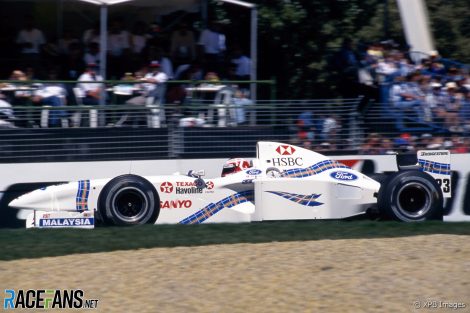
This also proved relatively short-lived and by the end of 2005 the team was up for sale. In stepped Red Bull brand co-founder Dietrich Mateschitz who purchased the team and appointed Christian Horner who transformed it into the powerhouse operation it is today.
Advert | Become a RaceFans supporter and
Mercedes
Identities: 4
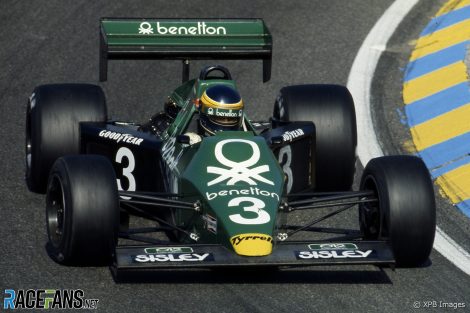
As tobacco sponsorship was increasingly outlawed, British American Racing was taken over by its engine supplier, Honda, in 2006. But within three years it had sold up, one of several car manufacturers which wound down their F1 operations in the wake of the late-noughties credit crunch.
The team was only rescued thanks to the quick work of team principal Ross Brawn and others, who led a management buy-out, agreed a new engine supply from Mercedes, and stunned F1 by winning the constructors’ championship the following year and taking Jenson Button to the drivers’ title. Mercedes saw the potential and took over the team, and within four years they were winning titles regularly.
Ferrari
Identities: 1
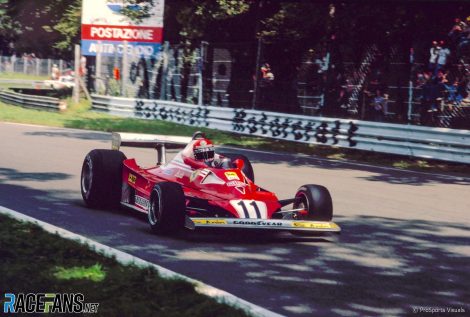
McLaren
Identities: 1
Another one of the handful of teams which have stayed faithful to their original name. McLaren celebrated their 60th anniversary last year but arrived in F1 in 1966. Founder Bruce McLaren died in a crash testing one of their Can-Am cars four years later, since when the team has had a succession of different owners, but no other identity. Other great names which date back to the sixties and earlier – Lotus, Brabham and others – are sadly long gone.
Advert | Become a RaceFans supporter and
Aston Martin
Identities: 6
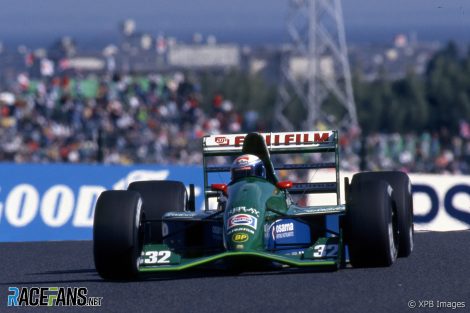
The operation founded by Eddie Jordan won races in the late nineties but couldn’t keep pace with the rapid rise in spending over the years which followed. By 2005 he had sold up to the first of a succession of owners: Russian investment group Midland (surely the dullest name ever applied to an F1 team) was followed by Dutch sportscar make Spyker, then Indian billionaire Vijay Mallya. Under the latter the team regained its reputation for punching above its weight, especially during the V6 hybrid turbo era, but Mallya’s legal and financial problems eventually forced him to sell up as well.
It was bought by a consortium led by another billionaire, Lawrence Stroll, father of F1 racer Lance Stroll, who soon joined their driver line-up. The operation was initially rebranded as Racing Point (surely the blandest name every applied to an F1 team) but this was merely a placeholder before Stroll’s plans to buy Aston Martin came to fruition. That done, the F1 team took the car make’s name in 2021, and returned to a green colour scheme not unlike its original one.
Alpine
Identities: 6
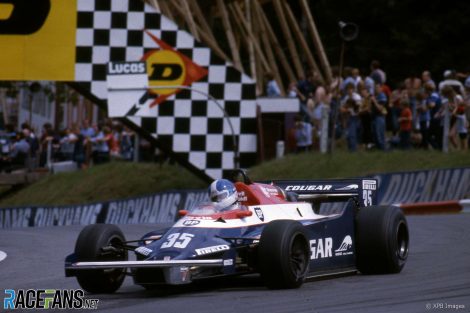
They became race winners in the first year in their new identity, and by the mid-nineties were winning championships with Michael Schumacher. In 2002 Renault took over the now struggling team and reshaped it into championship contenders once more, this time with Fernando Alonso, but quit the sport in disgrace in the late noughties following the Crashgate controversy.
The team continued to compete under the Renault name as it squabbled with a rival over the rights to use the name ‘Lotus’, which it finally acquired in 2012. But by 2016 Renault was back, and three years ago the manufacturer chose to rebrand its team after its Alpine performance brand.
Advert | Become a RaceFans supporter and
Williams
Identities: 1
The team founded by Frank Williams has won more constructors championships than anyone bar Ferrari, so it would have been a travesty to see their name disappear from the grid. Thankfully Dorilton saw the value of keeping the legacy name in place when they purchased Williams in 2020, and though the team now has a more American flavour its identity has been preserved.
RB (AlphaTauri in 2023)
Identities: 4
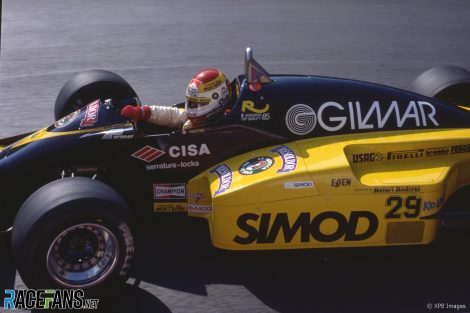
Having entered F1 in 1985, Giancarlo Minardi sold up to Australian businessman Paul Stoddart in 2001, but he kept its original name in place. By 2005 he was in need of a buyer too, however, and Red Bull decided it required a second team to develop young talents for its top squad.
Minardi therefore became Toro Rosso – Italian for ‘Red Bull’. Ironically, it won a race before the senior squad did, courtesy of an inspired performance by Sebastian Vettel at a rain-soaked Monza in 2008.
Despite Red Bull remaining in charge, the team has changed names twice since then. In 2020 it became AlphaTauri – Red Bull’s fashion brand – and on the entry last for the 2024 F1 season its name has changed again to ‘RB’. The team has advised RaceFans this is a “placeholder” name and it remains to be seen what it will eventually become. Documents filed by Red Bull indicate it could turn into ‘Racing Bulls’.
Advert | Become a RaceFans supporter and
Sauber (Alfa Romeo in 2023)
Identities: 5
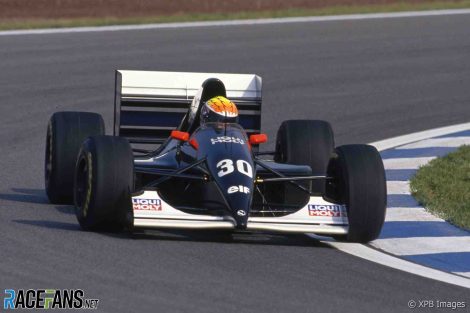
BMW took over the team in 2006, rebranded it as BMW Sauber and looked on course to mount a title bid when it scored a one-two in the 2008 Canadian Grand Prix. But its championship challenge faded over the second half of the year and during an uncompetitive 2009 season it decided to follow Honda through the door marked ‘exit’. A late snag meant its name remained on the team the following year, which together with an enforced change in engine supplier meant the entry was officially – and bizarrely – dubbed a ‘BMW Sauber Ferrari’.
Alfa Romeo took over the naming rights from 2019 until last year. In 2026 another car manufacturer, Audi, will arrive, though like BMW they will also supply the engines. Until then the team has revealed its chassis name will be ‘Kick Sauber’ and it will be officially entered as ‘Stake F1 Team’ in deference to a sponsor. It will continue to be operated by the Sauber Group, so many may simply prefer to refer to it as ‘Sauber’.
Haas
Identities: 1
The fourth team to have kept the same name since it entered the sport only arrived in 2016. But as three of Haas‘ rivals have changed names twice in that short space of time, that is nothing to be sniffed at.
Advert | Become a RaceFans supporter and
Formula 1
- F1 CEO Domenicali wants more than six sprint races per year
- Hulkenberg named Audi’s first F1 driver for 2026
- Ricciardo needs to show “head-turning form” for 2025 chance – Horner
- F1 Commission defers decision on points change and approves new rear cameras
- Red Bull’s star designer Newey to leave team – reports




Esploratore (@esploratore1)
3rd January 2024, 12:57
An interesting article, I like that 3 teams have been around for that long with the same name, a shame they mostly haven’t been that competitive the last 1-2 decades.
notagrumpyfan
4th January 2024, 9:11
It’s not exactly correct.
Only five years ago two of those teams were called Rokit Williams Racing and Scuderia Ferrari Mission Winnow. I don’t recall when McLaren last included a sponsor to its official team name (Vodafone McLaren Mercedes).
The difference to Sauber is probably that they kept part of the ‘identity’ as the official team name.
But then again as mentioned above, Sauber remained part of the name during the BMW years. And (partial) ownership changes happen all the time without a change in identity. Williams has a new owner and Mercedes is now only 1/3 owned by Mercedes and the team is officially called Mercedes-AMG PETRONAS Formula One Team.
Pat Pepper
5th January 2024, 0:22
@notagrumpyfan, Are we really going to suggest that the inclusion of the much-missed (not) Mission Winnow on team entry lists of the relevant period somehow meant those cars had a different identity to all of the Scuderia’s other models?
If we counted sponsors on team entry lists as genuine changes of identity, we would be looking at many more different examples than “just” 33.
But if any of us are lucky enough to meet Mika Hakkinen one day and we ask him which team he drove for in 1996 and 1997, he isn’t going to reply “well, it was Marlboro McLaren in ’96 but West McLaren in ’97”. He’s just going to say “McLaren”. Funnily enough, I think he’d be right too :)
notagrumpyfan
5th January 2024, 20:38
I did NOT suggest that. I thought it was quite clear that I made the distinction between name and identity.
Yet the inconsistency in defining identity is still valid, unless you can enlighten me what I missed.
dot_com (@dot_com)
3rd January 2024, 13:05
This is such a great article – I love seeing the timeline of the teams laid out in this way.
David
3rd January 2024, 13:08
Odd to see that Mercedes can actually track their history back to Tyrell. I’d never joined the dots before!
Craig
3rd January 2024, 22:15
Have to admit I always forget BAR bought Tyrell.
MacLeod (@macleod)
4th January 2024, 7:44
Mercedes should be older then that as they raced in the mid fifties! as the Silberpfeil was called back then.
Tommy Scragend
4th January 2024, 12:04
Mercedes did. But the team currently known as Mercedes didn’t.
Matt Jones (@mattj)
5th January 2024, 20:28
Interestingly Ross Brawn actually considered changing the name of the team back to Tyrrell when he took over, before using the BrawnGP name.
Coventry Climax
3rd January 2024, 13:15
Good for historic insight, but I also feel that’s about it.
It’s like going to my local store that says ‘est. 1897’ on it’s shop window, as if nothing has changed and it’s still the same people running it, even if it’s been sold and bought a dozen times already and is now owned by a hedge fund ‘investment’ company.
Nick T.
3rd January 2024, 21:05
We always know a hedge fund is there to make things right and invest in the community. Salt of the earth type guys.
GeeMac (@geemac)
3rd January 2024, 13:23
It is a good day when you get to read an article which contains photos of the Stewart SF1, Jordan 191, Minardi M185 AND the Sauber C12. :)
In all seriousness, in my humble opinion Red Bull should just name “RB” (urgh) either (a) “Red Bull Minardi” or (b) “Scuderia Toro Rosso”. Both those names have history which the team can legitimately claim and will give the team a bit more character. Calling them “RB”, “Racing Bulls” (urgh) or some variant of that will just mean they are another generic F1 team you could easily forget about.
Unicron (@unicron2002)
3rd January 2024, 20:35
Bear me to it, I was just about to heap praise on on the photos of the beautiful 191 and C12, and even the Stewart looks elegant and classy from the side.
Nick T.
6th January 2024, 6:30
Many don’t realize Minardi became competitive for a very short time in the early ‘90s. They even almost nabbed a pole. If memory serves, they had a really good quali at Estoril during that time.
BasCB (@bascb)
9th January 2024, 7:58
Yeah, those pictures of these beautiful cars really help making this a thoroughly enjoyable read for the morning coffee!
MrBoerns (@mrboerns)
3rd January 2024, 14:24
Funfact: Alpine actually conpeted with the original Renault Team
jonas
3rd January 2024, 20:35
One of my favorite F1 facts is that the team founded as Toleman has competed against the original Renault and Lotus teams, but later competed against another Lotus team while it was called Lotus Renault. That of course was before and after being owned by Renault. Now it’s owned by Renault but called Alpine and runs almost in the Toleman colors :)
Maimai (@maimai)
3rd January 2024, 14:27
Technically, Tyrrell is a successor to the Matra team of 1966-1969.
F1 frog (@f1frog)
3rd January 2024, 18:11
I’m not sure it is. Ken Tyrrell did run that Matra team but it continued into 1970-1972 separate from Tyrrell (with Chris Amon driving a Matra in his famous near-win at Clermont-Ferrand in 1972), and Matra had some connection to the Ligier team that formed in 1976. I think that Tyrrell was a totally new team in 1970 broken away from Matra, and initially running a March. Personally, I don’t like the idea of that team having continued on from Tyrrell, my all-time favourite team. I think Tyrrell ended in 1998 (even though Ken Tyrrell’s involvement ended at the end of 1997), and BAR was a totally new team.
anon
3rd January 2024, 20:34
@maimai it is true that Ken Tyrrell did enter two cars for the 1966 German Grand Prix, but whether that should count is debatable.
The Automobile Club von Deutschland, who organised the race, invited a mixture of Formula 1 and Formula 2 cars to participate in that race. The Formula 2 cars were used to bulk up the grid, as initially the organisers were worried there would only be a small number of Formula 1 cars (although they actually had more entrants than expected), but they were not recognised as entrants in the World Drivers Championship.
Ken Tyrrell entered two MS5 Formula 2 cars that were provided to him by Matra Sport, which means they were not recognised as participating in the Grand Prix – what you technically had was a non-championship Formula 2 race that was taking place simultaneously with a Formula 1 World Drivers Championship race, and Tyrrell’s cars officially took part in the former race.
In 1967, the Automobile Club von Deutschland, once again, ran the German Grand Prix as two races that were happening simultaneously – the Formula 1 race, which was a World Championship race, and a non-championship Formula 2 race. Ken Tyrrell entered a Matra MS5 in the Formula 2 category, so although his car was sharing the track with those taking part in the German Grand Prix, it was not classified as competing in the German Grand Prix.
What reinforces that point is that there was a Formula 2 manufacturer, Protos, who entered a Formula 2 car into the 1967 German Grand Prix. They are recognised as entering the Formula 2 race, but you will usually find that they are not counted as an official entrant or an official constructor in Formula 1 – if they are not considered to qualify, then Ken Tyrrell arguably doesn’t count either given he competed as a Formula 2 entrant.
For the 1967 US and Mexican Grand Prix, the official entrant was Matra Sport – Ken Tyrrell was running the team on Matra’s behalf, and those races are counted as part of Matra’s history in the sport, not for Tyrrell.
Now, from the 1968 South African to the 1969 Mexican Grand Prix, the official entrant was Matra International. Ken Tyrrell was a partner in Matra International, which was a joint venture between himself and Matra – the picture there is thus somewhat blurry, as you had Ken Tyrrell running the race operations, but the chassis design and manufacturing was by Matra. Generally, people seem to fudge the situation by counting those races towards both Tyrrell and Matra.
In 1970, you then had the split between Tyrrell and Matra – at that point, Ken Tyrrell splits his assets out of the team and begins entering Formula 1 races as the Tyrrell Racing Organisation, whilst the original entity, renamed as Equipe Matra Elf, continued entering Formula 1 races as the official works team for Matra.
Pat Pepper
4th January 2024, 23:05
@F1 Frog and @anon, you both make essentially the same point that in 1970 Tyrrell/Tyrrell Racing Organisation began entering F1 while the team which Ken Tyrrell had run prior to that point continued without him as the works Matra team, but in both respects this isn’t the correct reading of what happened.
To establish the true picture we need to go back first to 1968, when there were two teams running Matra cars – the works team using their own V12 engine and the Tyrrell Racing Organisation running as Matra International with Cosworth DFVs.
For 1969, the works team withdrew while Ken’s outfit continued and of course took the world titles.
When Ken refused to switch to the Matra V12 engine for 1970, it spelt the end of his Matra International arrangement but his team, the Tyrrell Racing Organisation, continued, first with March chassis and then, from near the end of that season, with his own chassis.
At the same time, the works Matra team which had competed in 1968 but rested in 1969 returned for 1970 with the V12 cars. This was emphatically not a continuation of Ken’s team from 1969, which Ken was most certainly continuing himself.
And that 1969 team, though it was indeed known as Matra International, was also the Tyrrell Racing Organisation. Yes, that’s confusing and complicated, but it’s the fact, and if you look at programmes and entry lists from 1968 and 1969 you will sometimes see Ken’s entrant name being listed as Matra International and sometimes as the Tyrrell Racing Organisation.
But he was far from the only entrant who was named variously from race to race in those days, when these things were much less formal and left to the whim of the race organiser. It’s not the point: the point is that the Tyrrell Racing Organisation which was running a March 701 and a Tyrrell 001 in 1970 was very much the same entrant that was running Matra-Fords in 1968 and 1969.
For further proof, I invite you to do a Google image search of the terms “Tyrrell Racing Irganisation”, “Helen Stewart” and “1969” and you will find a nice Sutton photo of Helen from 1969 under an entry placard which says “Matra-Ford” at the top and “Tyrrell Racing Organisation Ltd” immediately underneath.
In a nutshell, it’s why the Companies House listing for Mercedes-Benz Grand Prix Ltd gives that present day company’s date of incorporation as 9th January 1964 – 60 years ago next week, which is worth noting – with its name from that date until 10th November 1998 being given as Tyrrell Racing Organisation Ltd.
SteveR (@stever)
3rd January 2024, 15:58
My understanding is that Honda ‘sold’ the team to Brawn for $1 and provided $100 million to run the next season. That’s one sweet ‘buyout’ I wouldn’t hesitate to take!
Red Andy (@red-andy)
3rd January 2024, 18:15
Some of the links in the chain are a bit dubious – as the article notes, BAR was not a rebrand of Tyrrell, but a new team that merely took over Tyrrell’s entry. In that case the Mercedes lineage only goes back to 1999.
You could also argue that Aston Martin’s lineage only goes back to mid-2018 when Force India went into administration and its assets were taken over by Stroll’s consortium – the team even had to start again with constructors’ points because they were technically a new entity. Although in that case they at least continued with the same headquarters and (most of the) employees.
anon
3rd January 2024, 21:49
@red-andy on the other hand, at no point in time has the company that was originally set up by Ken Tyrrell ever ceased to exist. BAR bought out the shares of the original company and renamed it, and all of the successors to BAR did the same thing, which means that the contemporary Mercedes team still has the same company registration that was issued to Ken Tyrrell back in 1964 when he first founded the Tyrrell Racing Organisation.
Would you therefore argue that McLaren only dates back to 1981? After all, Ron Dennis’s Project Four Racing did the same thing with McLaren, where he also bought out the shares owned by the original founders of that team and transferred the entry rights to a new company (McLaren International).
Indeed, the original company that Bruce McLaren founded to go racing – Bruce McLaren Motor Racing Limited – no longer exists. Everything that the original company once had was transferred into other parts of the wider McLaren Group, and in July 2022 the original company was then dissolved.
F1 frog (@f1frog)
3rd January 2024, 18:22
The whole idea of the changes in team names are so confusing and weird that is ruins many statistics. It would be better for them to keep a constant actual team name but have a different title sponsor (for example, Team Dynamics in BTCC have always had that name but were sometimes called Honda Yuasa Racing officially. Similarly, West Surrey Racing are sometimes branded as Team BMW).
It is also difficult to know how to connect manufacturer teams such as Mercedes. It is the same company that runs the team now as in the 1950s, but many of the team members carried over from Brawn in 2010. Should the current team be connected to the Brawn-Honda-BAR team or the Mercedes-Benz team of 1954-1955? Both would make sense, although I don’t consider the team to be connected to Tyrrell.
Alfa Romeo seems more obviously like a continuation of Sauber than a return of the 1950-1951 team or the early 1980s team.
Alpine is obviously the same as Renault, and the Lotus of 2012-2015. But that Renault of 2002 could be connected to the previous Benetton and Toleman teams or the Renault of 1977-1985. Although Flavio Briatore’s involvement with both Benetton and Renault makes it seem more connected to that team.
The line from Jordan to Aston Martin seems quite straightforward although three big characters in Eddie Jordan, Vijay Mallya and Lawrence Stroll arguably seem like separate teams.
Minardi also seems like a separate entity to Toro Rosso, who are exactly the same as Alpha Tauri/Racing Bulls. Red Bull directly took over from Jaguar and Stewart, but they also seem a bit separate from the teams that came before them and like their own team. Maybe a team becoming so successful and forming such a legacy is what makes it seem wrong for its previous guises to be included in that.
Williams seems fairly straightforward, but actually Frank Williams ran a team before 1977 called Iso-Marlboro. Between that and Williams there was a link with Wolf. And before Iso-Marlboro, I believe the privateer team that Piers Courage drove for was called Frank Williams Racing. So these teams are effectively still Williams.
Thank goodness that McLaren and Ferrari are straightforward. Although it is difficult to pinpoint exactly when Ferrari became independent of Alfa Romeo, they clearly were by the time the world championship started.
And Haas will surely have many different names in the future. But it was nice to see some new owners form an entirely new team, rather than just taking over another one. I like this approach from Andretti as well, as much as FOM and the teams don’t.
Pat Pepper
5th January 2024, 1:52
A lot of excellent points there, @F1 Frog.
Frank Williams Racing Cars was the name not just of Sir Frank’s private entries for Piers Courage (running a Brabham in 1969 and a custom-built De Tomaso in 1970) but was the company name (and, off and on, the team name) for all of Frank’s entries between then and 1976. During that period Iso-Marlboro was the name in 1973 and 1974 only, but it was a very rare example in those days of what Sauber have been doing in recent seasons with first Alfa Romeo and now Stake, giving full branding rights to the sponsors including the official name of the constructor marque. In fact, Frank had already done this the year before his deal with Iso-Rivolta and Marlboro (the Rivolta part of Iso-Rivolta wasn’t used, presumably because Iso-Rivolta-Marlboro was too much of a mouthful): in 1972 his first ever own-construction car was branded a Politoys in a similar deal with the then sponsor (in 1971, after the tragic events of 1970, FWRC had run a privateer March).
By 1975, however, Frank had lost the Iso and Marlboro money and was finding long-term replacements difficult to come by and thus for the first time he ran his cars officially under the Williams marque. So it’s not quite correct to say that the link with Wolf was between Iso-Marlboro and Williams, though it was between the original Williams and the second Williams which survives to this day.
That link with Wolf led to all sorts of confusing history! It began in 1976 as a sponsorship deal and the cars are sometimes referred to as Wolf-Williams, but as far as I can glean from all the historical sources, the marque remained officially just Williams. In any case, the cars were not Frank’s original creations, they were rebadged Heskeths.
At the end of 1976, sponsor Walter Wolf had bought Frank out of his own team and from now on there was no doubt about whether it was Williams or Wolf-Williams: the marque would be Wolf, full stop. Frank Williams Racing Cars was gone for good. But, just days into the 1977 season, and fed up with being offered a demeaning minor job in what had been his own company, Frank left, phoned up Patrick Head, bought a former carpet warehouse and (back to the future) an old March and set about finding the Middle Eastern sponsorship which would allow him to be a constructor in his own right again in 1978. Williams Grand Prix Engineering, the company which still exists today, was born, and the rest is history.
Meanwhile Wolf, after a sensational start, fell rapidly down the grid, and at the end of 1979, by which time Frank’s new team was the one causing a sensation, his former team was sold by Walter Wolf to Emerson Fittipaldi.
So yes, Williams 2.0 is fairly straightforward as you say, @F1 Frog, but Williams 1.0 was a bit less straightforward !
Inded, Williams 1.0 to Wolf to Fittipaldi was an early example, and at the time less common, of the sort of identity change which Keith’s entire article is about!
Christiaan Lustig
3rd January 2024, 18:24
So, with old school team designations, the 2024 entry list would be:
Red Bull Stewart Honda
Petronas Tyrrell Mercedes
Scuderia Ferrari
OKX McLaren Mercedes
Aramco Jordan Aston Martin
BWT Toleman Alpine
Gulf Williams Mercedes
Red Bull Minardi Honda
Stake F1 Team Sauber Ferrari
MoneyGram Dallara Ferrari
Bullfrog (@bullfrog)
3rd January 2024, 19:22
Should there be a very thin blue-and-white stripe in that unbroken red one, for the North American Racing Team?
Todfod (@todfod)
4th January 2024, 6:37
I thought Tyrell was renamed to BAR in 1998.. I remember Villenueve racing for them after his 1997 win. Maybe I’m mistaken.
Severin (@severin)
4th January 2024, 11:23
Villeneuve (and Frentzen) drove the red Winfield Williams-Mechachrome in 1998
Pat Pepper
5th January 2024, 12:03
Tyrrell had passed to BAR ownership for the 1998 season, and operations were transferred to Brackley in the very latter part of it, but the team remained Tyrrell throughout the year, in order to ensure the team kept its funding under the Concorde Agreement.
JV stayed with Williams to defend his championship in ’98, but as Tyrrell morphed into BAR with his manager Craig Pollock as team principal, it was no surprise to anyone when he moved to Brackley for ’99.
Incidentally, the Brackley site was opened in July ’98 with the team’s operations being switched from the old timber yard at Ockham that October. There was one race to go in the season, the Japanese GP on 1st November.
So though there are many who quite reasonably poohpooh the idea that the link back from Mercedes to Tyrrell was anything more than on paper only, it’s an interesting factoid that for one unique race Tyrrell did indeed operate completely out of Brackley (and had done so at least partially for several months before), thus providing a reasonable case for arguing that the link from Tyrrell to Mercedes is more real than some would say.
Palindnilap (@palindnilap)
4th January 2024, 9:11
Stating the obvious, but the article doesn’t state it : all current teams were originally named after a person more or less directly involved in the racing. No drink company or big constructor actually created one of those teams (although big constructors have created teams in the past).
Fer no.65 (@fer-no65)
4th January 2024, 9:30
Amusing fact that the three big german manufacturers took part in Sauber history. Mercedes at the beginning, BMW with the short lived take over and now Audi.
XM
9th January 2024, 5:14
Being based in Switzerland probably helps with that as well.
Jungle
4th January 2024, 9:58
Nice article. Had forgotten the connection of some previous team names. Shame the name of Brabham did not stay or evolve either.
Frank
4th January 2024, 16:29
If you replace all wooden planks in a ship one by one, is it still the same ship?
You can talk about heritage (and authenticity), but they are just man-made concepts in the end. We, humans, often fail to recognize that things are always evolving and nothing is ever as it for ever will be.
I remember an article in the 90s that claimed that The Big 4 of F1 (Williams, Benetton, Ferrari and McLaren, of course – who else) would always dominate and always return to the top after a slumber. As proof, the author pointed to a timeline that clearly showed the rise and fall of former Big Teams like Lotus, Tyrrell and Brabham – which he did not seem to pick up on.
Things evolve. Teams evolve. Sport evolves. And so they should, if they want to stay relevant. Nor F1 nor the teams exist to create a lineage or safeguard a presumed heritage.
I do not consider McLaren to be more F1 than Red Bull Racing.
Leif Knudsen
5th January 2024, 14:39
I would like to have seen who the predecessors where in each of the 10 F! spots although not acquired in succession.
The Haas spot was taken when Manor Marussia left — and so on.
cdfemke (@cdfemke)
8th January 2024, 0:37
I am missing footwprk arrows and minardi leading up to scuderia torro rosso. Why are those names not included